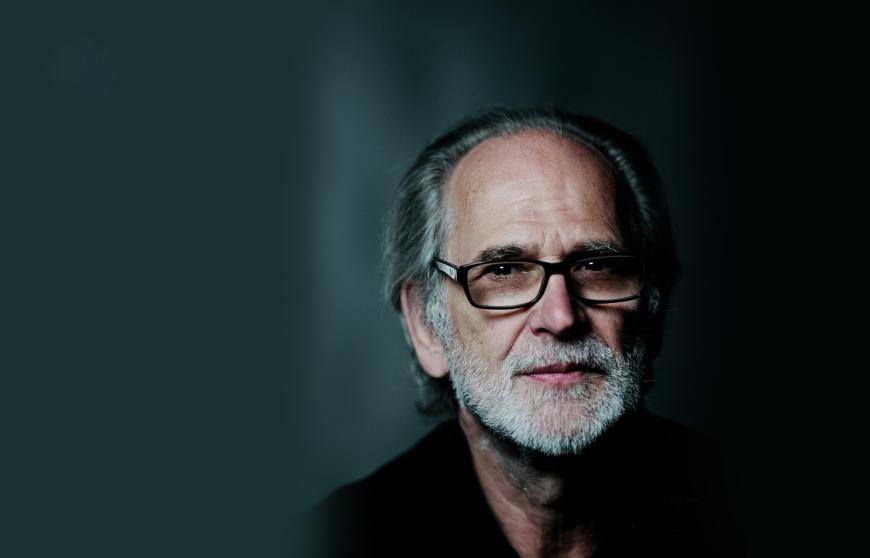
“Cello Quartet, the working title, is a new commission/concept/design idea to add another dimension to a music/dance performance/installation.
“In general, music/sound has three dimensions (timbre, time, and pitch); the fourth dimension would be adding ‘space,’ where the acoustical kinetic autonomous sculptural instruments are in constant motion onstage interacting with the cellist and the dancers.”
This is what Trimpin told SFCV about his project supported by a new Hewlett Foundation commission. More about Trimpin below, but first, about the awards:
The Foundation has announced the final round of awards in its five-year, $8 million Hewlett 50 Arts Commissions, marking the Foundation’s 50th anniversary.
Previous recipients of these awards include composer Meredith Monk, multimedia artist DJ Spooky, and vocalist The Dynamic Miss Faye Carol, working in partnership with Bay Area organizations Mills College, the Internet Archive, and Art + Soul Oakland, respectively. Last year alone, the Foundation awarded over $516 million in grants to organizations across the globe.
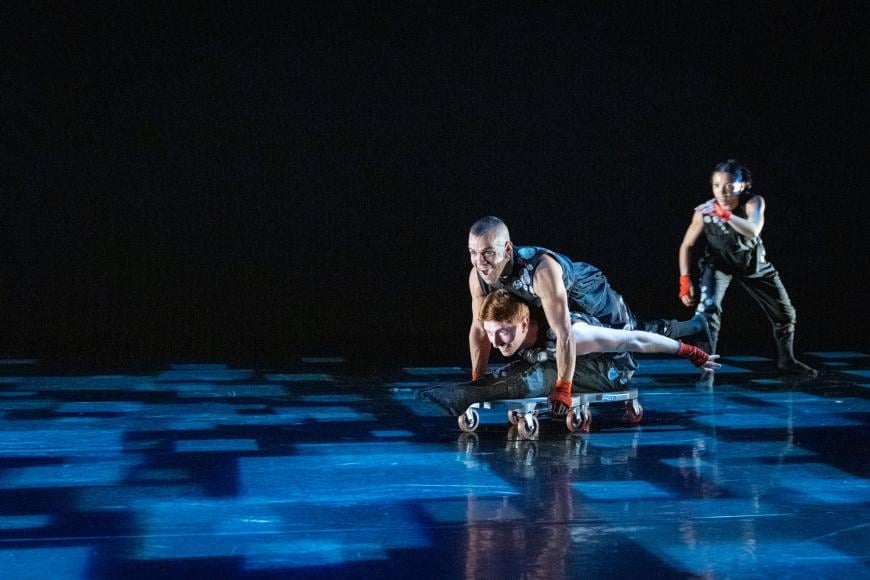
The new commissions for “innovative works in Media Arts” support the development of “major new works that incorporate elements of many artistic disciplines, including dance, music, and theater, with cutting-edge technologies like artificial intelligence, augmented and virtual reality, genetic engineering, and robotics.”
Emiko Ono, director of Hewlett’s Performing Arts Program, says, “These new commissions in Media Arts celebrate a group of outstanding artists who are merging longstanding storytelling and performing arts traditions with emerging technologies to create art that is fresh, contemplative, and spirited. We’re honored to support these exciting projects that weave together the performing arts and technology and will deeply resonate with Bay Area communities.”
Selected from more than 100 applications, these are the commission awards for projects to premiere over the next three years at various Bay Area cultural centers and institutions (project descriptions by the applicants):
— Jen Liu, who will combine augmented reality, web interfaces, choreography, sculptural props and costumes, and audio to tell stories of people whose lives have been made invisible
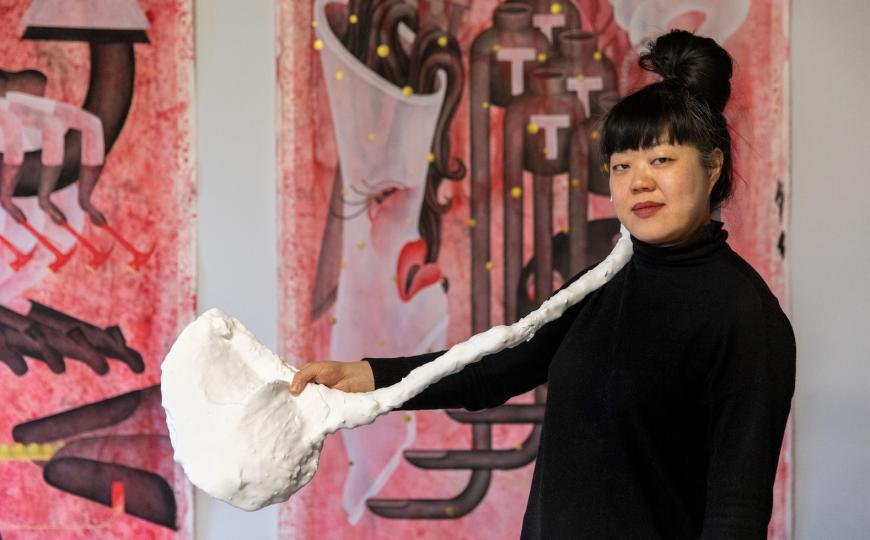
— Ben Levine, who will create a dance work incorporating disability robotics
— Anthropologist Heesoo Kwon, who will imagine a space for our past and present to converge, creating a community process with shamanistic ritual elements to heal from generational traumas
— Skawennati, who will help bridge traditional First Nations food and dress culture across borders
— Stephanie Dinkins, who will honor and care for often overlooked histories by archiving them within living trees for future extraction and sharing
— Eve Sussman and Simon Lee, who will use livestream performances to examine how human nature changes not at the pace of technological advancement but at the rate of human emotion
— Susana Ruiz and Huy Truong, who will invoke the last Chinatown in Santa Cruz through site-specific augmented reality performances and memorials
— Trimpin, who will explore the interplay between humans and machines through choreography and music set on an ensemble of human and autonomous dancers and cellists
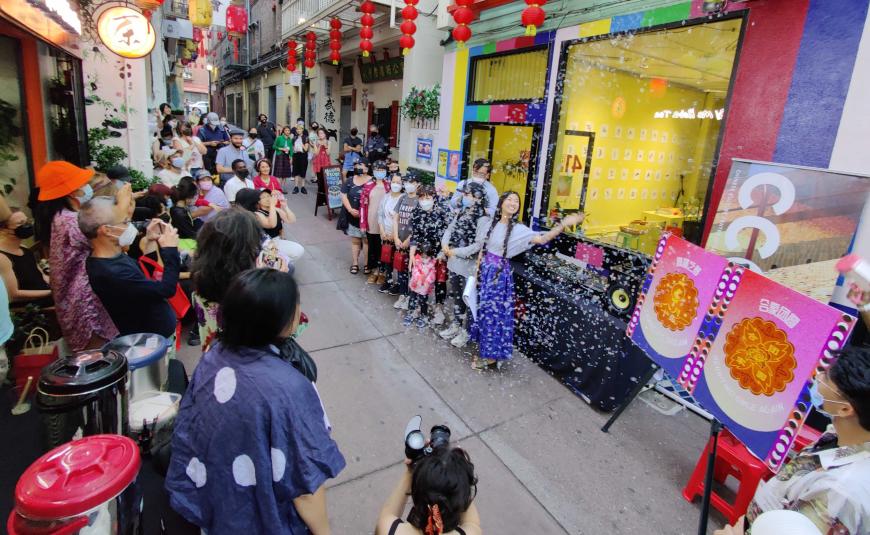
— Heather Dewey-Hagborg, who will explore multimedia hybrid performance and live film investigating xenotransplantation
— Cristóbal Martínez and Kade L. Twist, who will use generative music performance and instruments that use video game mechanics to explore relationships between land, community, and worldview
The commissioning organizations are AXIS Dance Company, Chinese Culture Center of San Francisco, Gray Area, Institute of Contemporary Art San José, Long Now Foundation, Santa Cruz Museum of Art and History, Other Minds, the Exploratorium, and Leonardo/ISAST.
Back to Trimpin and what he says of his Cello Quartet project:
The challenge is to build and develop a new genre of wireless interactive mechanical instruments, using AI and other new technologies like 3D sensors for the interaction with dancers and musicians.
My intentions are not to mimic the sound and musical expression of a cellist, the sculptural instruments exploring other time/timbre structures and pitch configuration using the spatial/kinetic component as an integral part of the composition.
There will also be a grand piano slowly moving around stage with a special keyboard adapter playing all 88 keys mechanically via a wireless MIDI connection. As soon as some of the prototypes are functional, the collaboration with the choreographer and costume, projection, and stage light designers can start to explore all the different possibilities.”
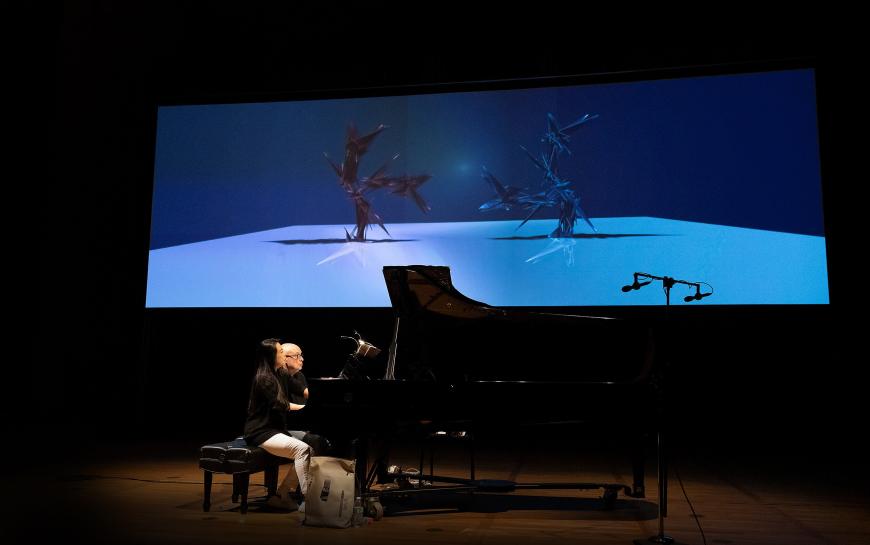
Trimpin is a veritable award winner, including this major accomplishment, as reported by Smithsonian magazine:
Many of today’s new instruments are as much sculptures as they are music makers; one is in the Metropolitan Museum of Art’s permanent collection. Some innovators, like Peter Schickele, design their creations to be a ‘scherzo,’ Italian for ‘joke.’
Others shun whimsy and view their experiments as a means of questioning the line between music and noise. A few visionaries have turned their instrument-making into careers, and one of them hit the jackpot. In 1997, an inventor named Trimpin (he refuses to divulge his first name) won a $280,000 MacArthur Fellowship.”
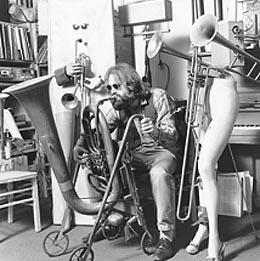
Born in Germany, Trimpin moved to Seattle in 1980 and has made the city his home base since, while traveling in the U.S. and in Europe. His work has been described as creating “interactive installations of sound and kinetic sculpture, as well as commissioned compositions for dance, symphony, and opera.”
He has collaborated with the composer Conlon Nancarrow (1912–1997), Kronos Quartet, the Eliot Feld Dance Company, and the Merce Cunningham Dance Company, among many others. He is the subject of the documentary film Trimpin: The Sound of Invention (2009) and the book Trimpin: Contraptions for Art and Sound (University of Washington Press, 2011).
His 2011 opera, The Gurs Zyklus, was commissioned by Stanford University, where he was artist-in-residence, and funded by Creative Capital, New York. The Seattle Symphony commissioned his site-specific composition Above, Below, and in Between, which debuted at Benaroya Hall in 2015.
Although thousands have admired Trimpin’s tornado of self-playing instruments at Experience Music Project, walked by his elegant 1994 water-music installation Hydraulis at Key Arena, and enjoyed the wind-up-toy wizardry of On: Matter, Monkeys, and the King next to the rolling walkway in Seattle–Tacoma International Airport — most have probably never heard of the artist.
At his Madrona neighborhood studio, Trimpin stores boxes filled with newspaper and magazine stories about him in German, Spanish, Dutch, French, Russian, and Japanese (not to mention English). In addition to the performances and commissions documented there, Trimpin is a sought-after instructor and mentor: He has been a resident artist at Princeton, Stanford, MIT, CalArts, the Claude Monet Garden in Giverny, France, and elsewhere.
His career of “being different” is anchored in his personality. Trimpin’s fourth-grade teacher found him hopeless. “She said I never would make it as a construction worker’s helper,” Trimpin recalled. “She said in a letter home that something was wrong with my logical thinking. It was quite off.”


